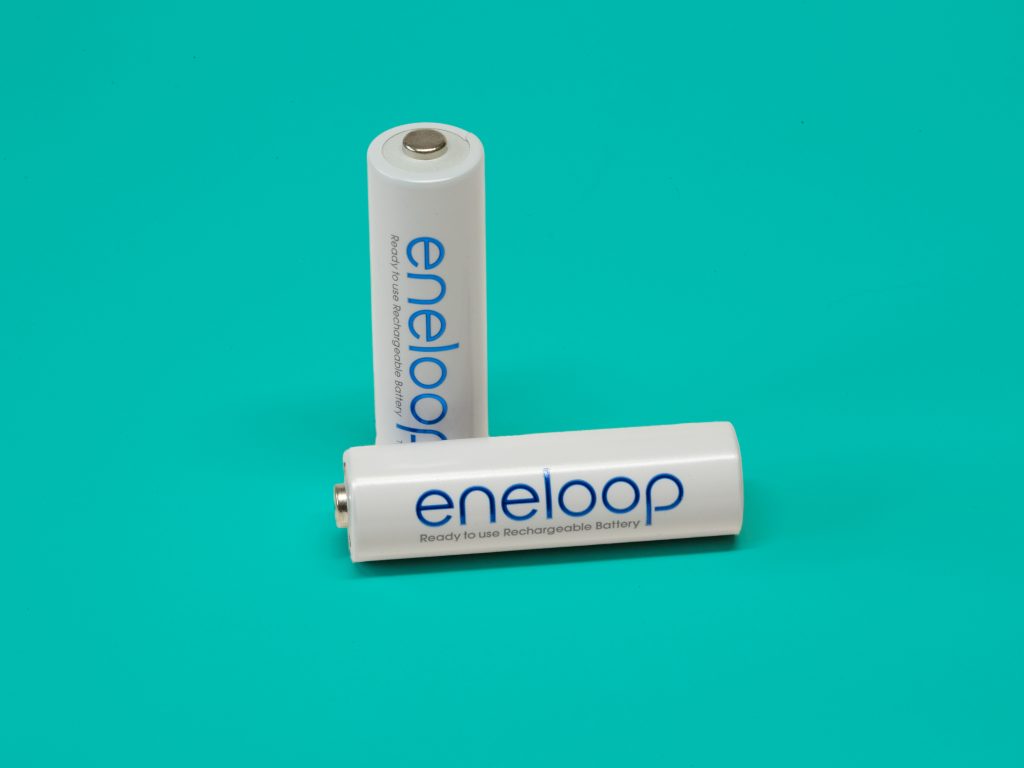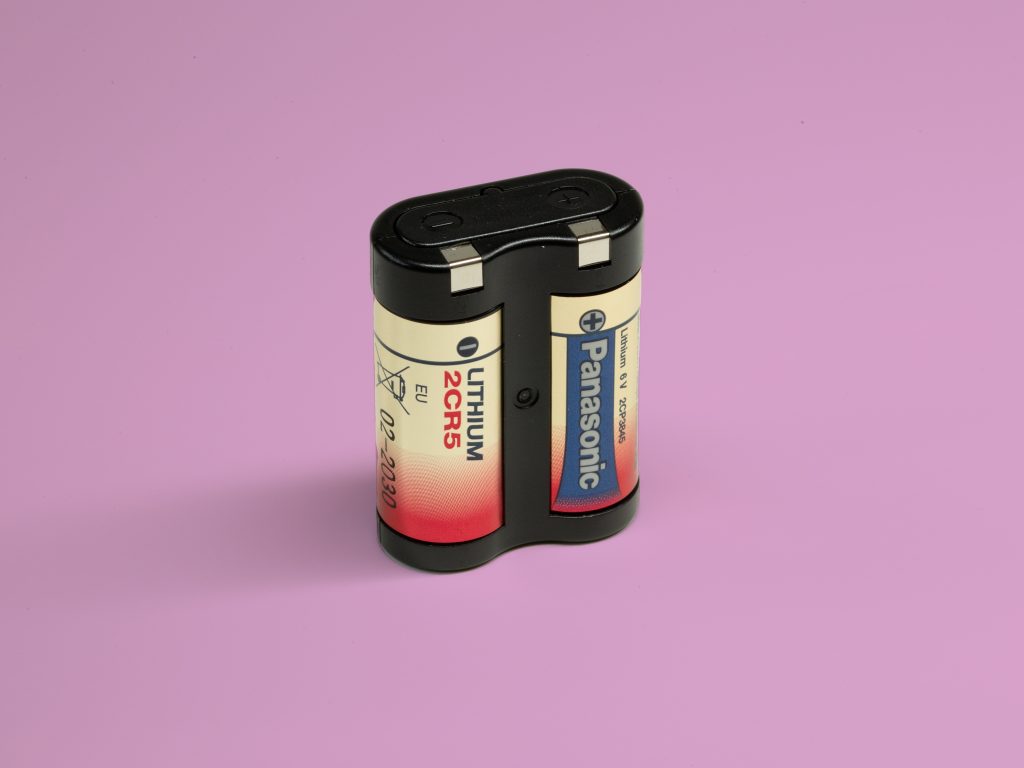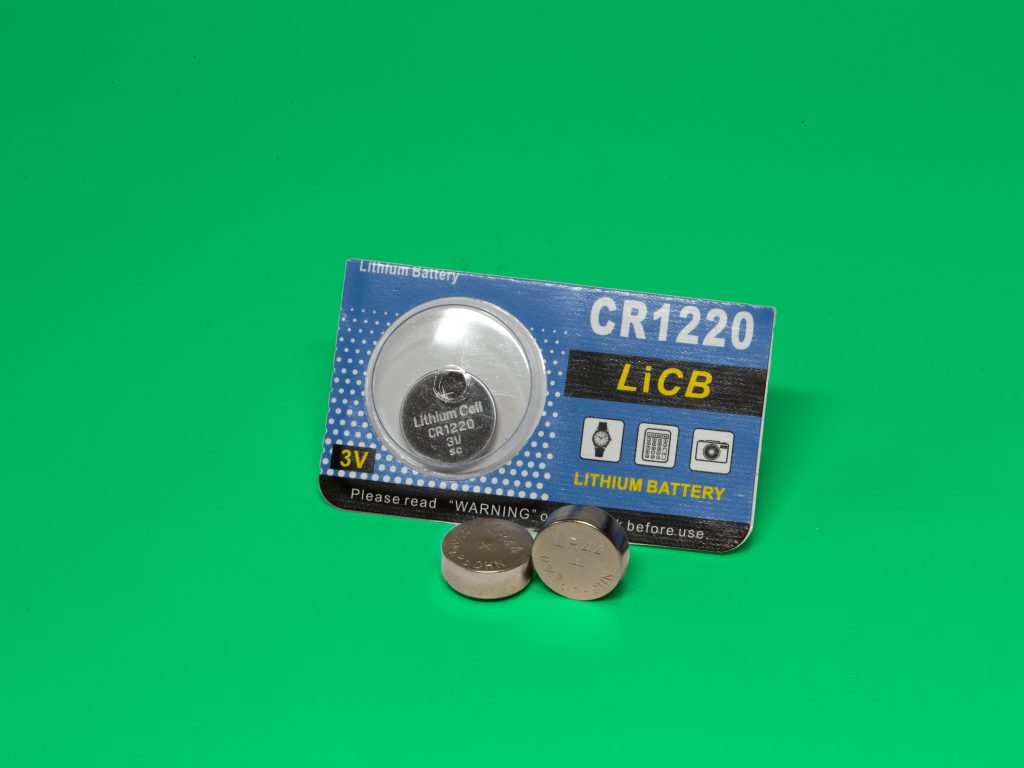Last Updated on April 15, 2024
You just got a brand-new-used film camera and can’t get it to fire a shot? The first thing you’ll want to check is your camera’s battery. It likely needs a fresh one. There are a few main battery types used in film cameras, so refer to your camera’s manual to find exactly which one you need. Happily, there is a dude, the extraordinary and benevolent Butkus, who has been providing free PDF copies of manuals for decades. Your camera is prob available. If it isn’t, a quick Web search will likely surface the info you need. I definitely recommend grabbing a copy of the manual though because so much weird stuff happens with old film cameras. It’ll save you a ton of (re)search time down the road.
But if you don’t want to bother with any of that, read on for info about the main types of batteries used in film cameras.

AA batteries. Film cameras produced throughout the 1980s and 1990s (like the Pentax 645) often use AA batteries. They are the easiest of all batteries to find and purchase today. Just about every online retailer and brick-and-mortar corner store sells them. There are a ton of brands to choose from, but I recommend Eneloops if you also have other photo gear like flashes or small video lights. Eneloops are rechargeable (yay environment!) and last a shockingly good long while. I have some that are nearly a decade old and still hold a decent charge. They are more expensive than regular AAs of course but are totally worth the cash if you are a photographer.

2CR5 batteries. Another common battery used in film cameras produced during the ‘80s and ‘90s (like Canon’s EOS-1N and 650) is the 2CR5. Unlike AAs, however, the 2CR5 isn’t readily available in brick-and-mortar stores, so you should stock up from Amazon or wherever you dig digitally shopping before you take your camera on an important gig. I usually buy Panasonic’s version and get around 50ish rolls a battery—quite a lot of shooting. The battery looks large, but it isn’t as heavy as a pair of AAs.

Button cell batteries. These are used in a ton of cameras manufactured throughout the 1970s and early 1980s (like the Minolta XG1), and they come in a bunch of different varieties: LR44, SR44, CR1220, and so on. Again, consult your manual to find exactly which one you need. Like the 2CR5, button cell batteries can readily be purchased online, but I haven’t seen them in a corner store in many, many years. The batteries are quite small (hence the “button” part of the name) and light, and thus add practically no weight to the camera. Despite the diminutive size, button cells last awhile. Cameras from this period aren’t as electronic heavy as fully auto cameras from the ‘90s, so a five- or ten-pack of button cells will keep you shooting for quite some time.
One thing to be aware of: some film cameras (like a Canon Canonet) natively use a 1.35-volt mercury battery that is no longer available. Most of those cameras can instead take a modern 1.5-volt alkaline battery, but the metering will likely be hot and overexpose your photos. No biggie if you are shooting negative film, but you’ll be hosed if you are shooting slide.
No batteries. Yep, there are indeed some film cameras that don’t require any batteries at all. Such cameras are all-mechanical wonders that photographers really love, especially if they happen to be Leica’s super spendy rangefinders. If you’ve managed to inherit or purchase one, then celebrate away. Even some pedestrian cameras like Pentax’s venerable K1000 can also mostly function without a battery (its light meter won’t work without some juice), so again check your manual to see if you have lucked out.



